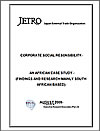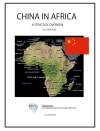BOP Report(Bottom of the Pyramid)
All data are collected in the Fiscal Year of 2008-2009.
11. A Common Cause
The emergence of the 4 billion people who make up the Tier 4 market is a great opportunity for MNCs. It also represents a chance for business, government, and civil society to join together in a common cause. Indeed, we believe that pursuing strategies for the bottom of the pyramid dissolves the conflict between proponents of free trade and global capitalism on one hand, and environmental and social sustainability on the other.
Yet the products and services currently offered to Tier 1 consumers are not appropriate for Tier 4, and accessing this latter market will require approaches fundamentally different from those even in Tiers 2 and 3. Changes in technology, credit, cost, and distribution are critical prerequisites. Only large firms with global reach have the technological, managerial, and financial resources to dip into the well of innovations needed to profit from this opportunity.
New commerce in Tier 4 will not be restricted to businesses filling such basic needs as food, textiles, and housing. The bottom of the pyramid is waiting for high-tech businesses such as financial services, cellular telecommunications, and low-end computers. In fact, for many emerging disruptive technologies (e.g., fuel cells, photovoltaics, satellite-based telecommunications, biotechnology, thin-film microelectronics, and nanotechnology), the bottom of the pyramid may prove to be the most attractive early market.
So far, three kinds of organisations have led the way: local firms such as Amul and Grameen Bank; NGOs such as the World Resources Institute, SELF, The Rainforest Alliance, The Environmental Defence Fund, and Conservation International, among others; and a few MNCs such as Starbucks, Dow, Hewlett-Packard, Unilever, Citigroup, DuPont, Johnson & Johnson, Novartis, and ABB, and global business partnerships such as the World Business Council for Sustainable Business Development. But to date, NGOs and local businesses with far fewer resources than the MNCs have been more innovative and have made more progress in developing these markets.
It is tragic that Western capitalists have implicitly assumed that the rich will be served by the corporate sector, while governments and NGOs will protect the poor and the environment. This implicit divide is stronger than most realise. Managers in MNCs, public policymakers, and NGO activists all suffer from this historical division of roles. A huge opportunity lies in breaking this code — linking the poor and the rich across the world in a seamless market organised around the concept of sustainable growth and development.
Collectively, we have only begun to scratch the surface of what is the biggest potential market opportunity in the history of commerce. Those in the private sector who commit their companies to a more inclusive capitalism have the opportunity to prosper and share their prosperity with those who are less fortunate. In a very real sense, the fortune at the bottom of the pyramid represents the loftiest of our global goals.
目次
- 1. Reperceiving Business from the Bottom Up
- 2. Bop in Brief
- 3. Four Consumer Tiers
- 4. The Invisible Opportunity
- 5. Tier 4 Pioneer
- 6. Creating Buying Power
- 7. Shaping Aspirations
- 8. Improving Access
- 9. Tailoring Local Solutions
- 10. Putting It All Together
- 11. A Common Cause
- 12. BOP Experiments in the Field
- 13. A BOP Typology
- 14. What's Next for BOP?
- 15. How to Get Started: The Conceptual Framework for BOP Innovation
- 16. BoP Conferences
- 17. Case Studies and Relevant Reference Material
- Bibliography




